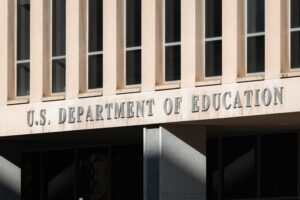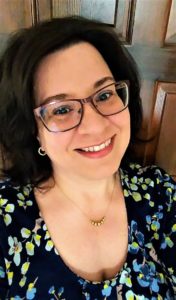 This letter started differently. The initial draft was about seeking and finding joy in everyday life. I’ve made a crow friend, the Juncos have returned and three chipmunks in our yard continue to play and chase each other around a large ponderosa tree out back.
This letter started differently. The initial draft was about seeking and finding joy in everyday life. I’ve made a crow friend, the Juncos have returned and three chipmunks in our yard continue to play and chase each other around a large ponderosa tree out back.
It’s nice to take a breath and imagine this for just a moment, isn’t it?
But then this morning, I got an email alert for a publication I follow, Inside Higher Ed, and realized that everything happening nationally has arrived in Flagstaff, most of which is through the lens of the “illegality” of diversity, equity and inclusion programs. I won’t pretend to understand how the administration is applying a legal judgment on college admissions to any current education program, research funding, scholarship or training that supports learning more about one another.
I know there is some confusion and negativity around diversity, equity and inclusion programs, so I want to share my experience as a beneficiary of this training as an educator. Because the students who have benefited the most from my training have been those who have diametrically opposed viewpoints from mine.
Teaching is my second career, and I thought I had all the skills necessary to walk into a classroom of first year college students. But what I wasn’t prepared for was confronting my own biases. During my first full year teaching, I brought Beyoncé’s “Formation” video into class thinking that it would be the perfect contemporary media for us to practice rhetorical analysis on. When a student declared that he didn’t like Beyoncé and implied she wasn’t smart enough to write her own lyrics, I listened for a minute before turning to the whiteboard. In big letters, I wrote “white male privilege” before the student even finished his comment. I believed that I had the moral high ground (and also was not used to people criticizing Queen B).
I continued lecturing, not realizing the rift my act had caused: those who appreciated my “smack down” and others who felt alienated because they didn’t like Beyoncé either. The student wrote to me after class and said he was disappointed to learn that I was a racist. This exchange still gives me nightmares; not what he said (although that was its own wake up call) but that I acted so quickly in class and “called out” a student for having a different opinion. My unwillingness to listen and to question various viewpoints was something I never wanted to bring into a classroom again.
Suffice it to say that I spent the next several years investing in professional development. Although the educational opportunities I took advantage of were not labeled diversity, equity and inclusion, that’s what I came to understand I was learning.
Diversity for me became understanding our varied backgrounds and belief systems. I see diversity in my classrooms mostly through conversations about politics and religion. Equity meant giving each student attention to their self-expression and helping them where they were at, and not how society expects students to be at age 18 or 19. Inclusion meant creating a space to experiment, where we could all learn from each other and practice our ideas and how we express ourselves. It also had to be a space where we didn’t “call out” or cancel each other but shared our viewpoints, asked each other questions, and also corrected one another (including students correcting me).
If I had known then what I know now, I imagine that the Beyoncé video exercise would have gone differently, and we might have had a broader discussion about popular culture and music as a well-known form of social protest.
In addition to confronting my own biases, I’ve also had to learn how to keep an open mind. I laugh with my students that sometimes our minds can be so open that it feels like they are windows, so we have to understand what our values are. In my Conspiracy Theory class this semester, we spend more time trying to understand why we believe these theories and understand the differences between “fact” and “truth” than we do learning about UFOs. I am amazed at the interpretations words can have and how they differ from class to class. Students wouldn’t feel comfortable having these discussions if they didn’t know that their questions would be honored and given consideration.
For example, when recently defining empirical truth as objective or subjective, there were a few students in every class who made the case that science is subjective. This goes against everything in my background as a person who believes in all things science. I confessed to a fellow teacher that I thought I was doing something wrong. He shared that in his work with Indigenous communities, an ongoing question is why science always seems to overrule belief systems and tradition. I didn’t have an answer, but through this lens, I could understand why my students believe what they do. I’m not saying I changed my mind, and I know I didn’t change theirs, but that’s not the point. Being constantly open to learning other perspectives so divergent from mine is something I wouldn’t have reflected on if I had not received diversity, equity and inclusion training at a pivotal point in my career.
Even with ongoing practice, I am challenged some days to apply these lessons to the time we’re living in now. What I want to fight for is continuing programs that highlight training and research for diversity, equity and inclusion. The lessons I’ve learned about how to listen and how to understand one another are making their way into the world through my students. Analysis, context, respectful dialog and working together for common causes are attitudes and values they will carry with them throughout their lives, making every space they occupy better. One adage continues to be true: Education is the one thing no one can take from any of us.

